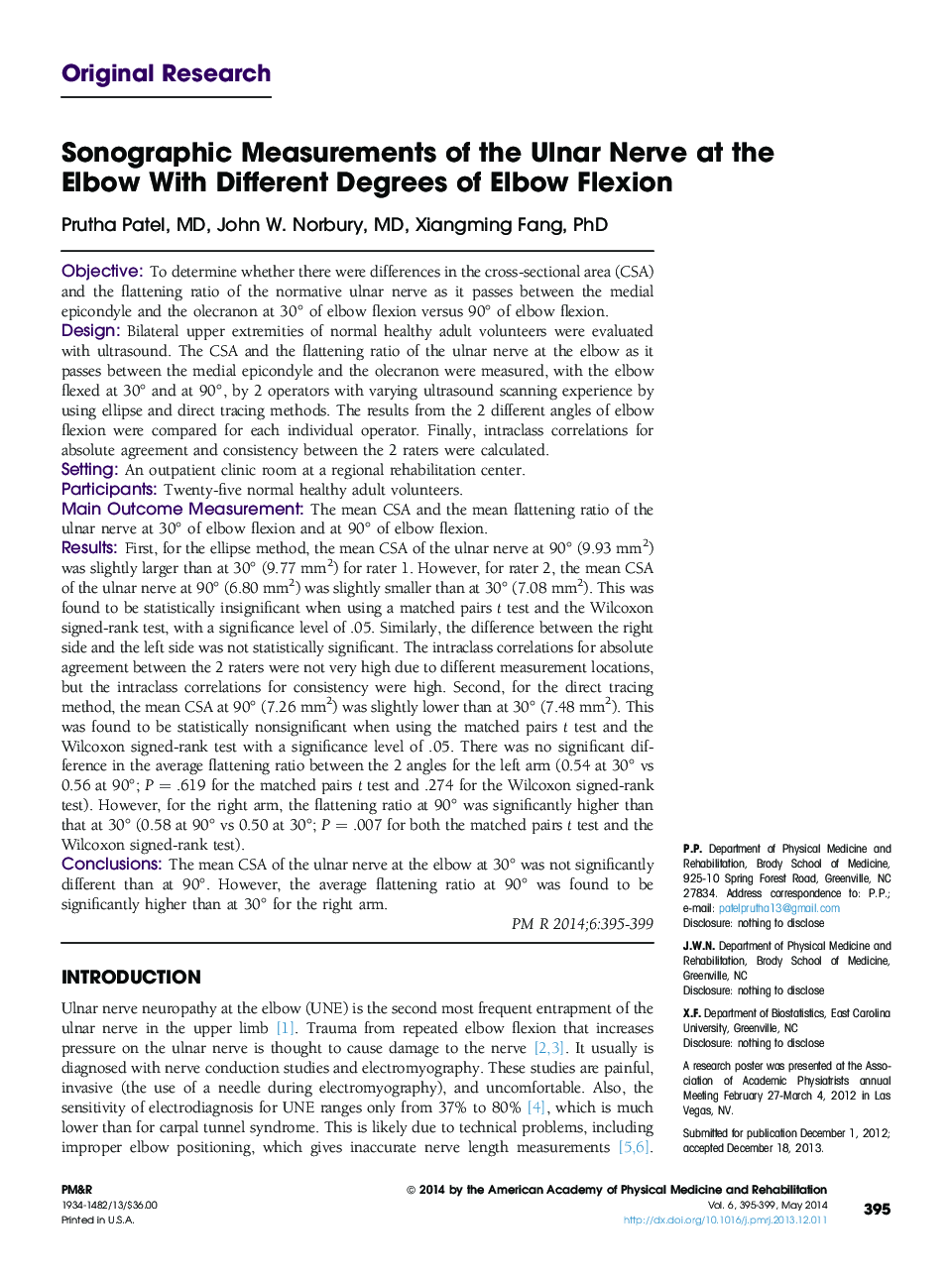| کد مقاله | کد نشریه | سال انتشار | مقاله انگلیسی | نسخه تمام متن |
|---|---|---|---|---|
| 2705114 | 1144724 | 2014 | 5 صفحه PDF | دانلود رایگان |
ObjectiveTo determine whether there were differences in the cross-sectional area (CSA) and the flattening ratio of the normative ulnar nerve as it passes between the medial epicondyle and the olecranon at 30° of elbow flexion versus 90° of elbow flexion.DesignBilateral upper extremities of normal healthy adult volunteers were evaluated with ultrasound. The CSA and the flattening ratio of the ulnar nerve at the elbow as it passes between the medial epicondyle and the olecranon were measured, with the elbow flexed at 30° and at 90°, by 2 operators with varying ultrasound scanning experience by using ellipse and direct tracing methods. The results from the 2 different angles of elbow flexion were compared for each individual operator. Finally, intraclass correlations for absolute agreement and consistency between the 2 raters were calculated.SettingAn outpatient clinic room at a regional rehabilitation center.ParticipantsTwenty-five normal healthy adult volunteers.Main Outcome MeasurementThe mean CSA and the mean flattening ratio of the ulnar nerve at 30° of elbow flexion and at 90° of elbow flexion.ResultsFirst, for the ellipse method, the mean CSA of the ulnar nerve at 90° (9.93 mm2) was slightly larger than at 30° (9.77 mm2) for rater 1. However, for rater 2, the mean CSA of the ulnar nerve at 90° (6.80 mm2) was slightly smaller than at 30° (7.08 mm2). This was found to be statistically insignificant when using a matched pairs t test and the Wilcoxon signed-rank test, with a significance level of .05. Similarly, the difference between the right side and the left side was not statistically significant. The intraclass correlations for absolute agreement between the 2 raters were not very high due to different measurement locations, but the intraclass correlations for consistency were high. Second, for the direct tracing method, the mean CSA at 90° (7.26 mm2) was slightly lower than at 30° (7.48 mm2). This was found to be statistically nonsignificant when using the matched pairs t test and the Wilcoxon signed-rank test with a significance level of .05. There was no significant difference in the average flattening ratio between the 2 angles for the left arm (0.54 at 30° vs 0.56 at 90°; P = .619 for the matched pairs t test and .274 for the Wilcoxon signed-rank test). However, for the right arm, the flattening ratio at 90° was significantly higher than that at 30° (0.58 at 90° vs 0.50 at 30°; P = .007 for both the matched pairs t test and the Wilcoxon signed-rank test).ConclusionsThe mean CSA of the ulnar nerve at the elbow at 30° was not significantly different than at 90°. However, the average flattening ratio at 90° was found to be significantly higher than at 30° for the right arm.
Journal: PM&R - Volume 6, Issue 5, May 2014, Pages 395–399
